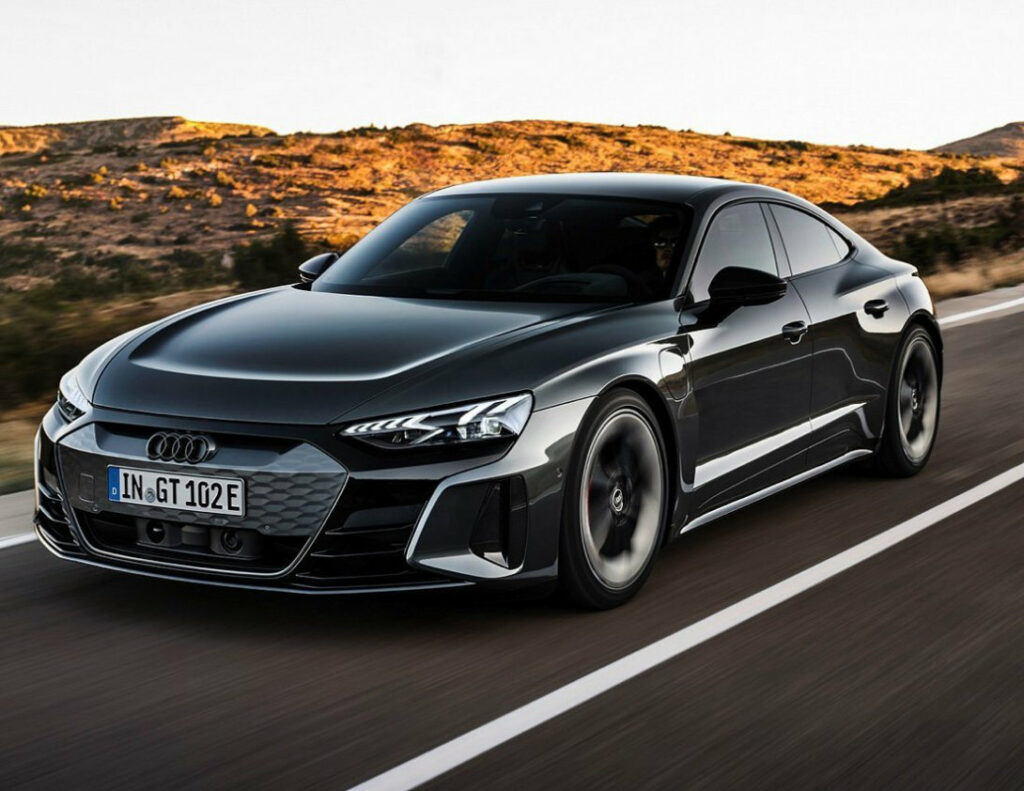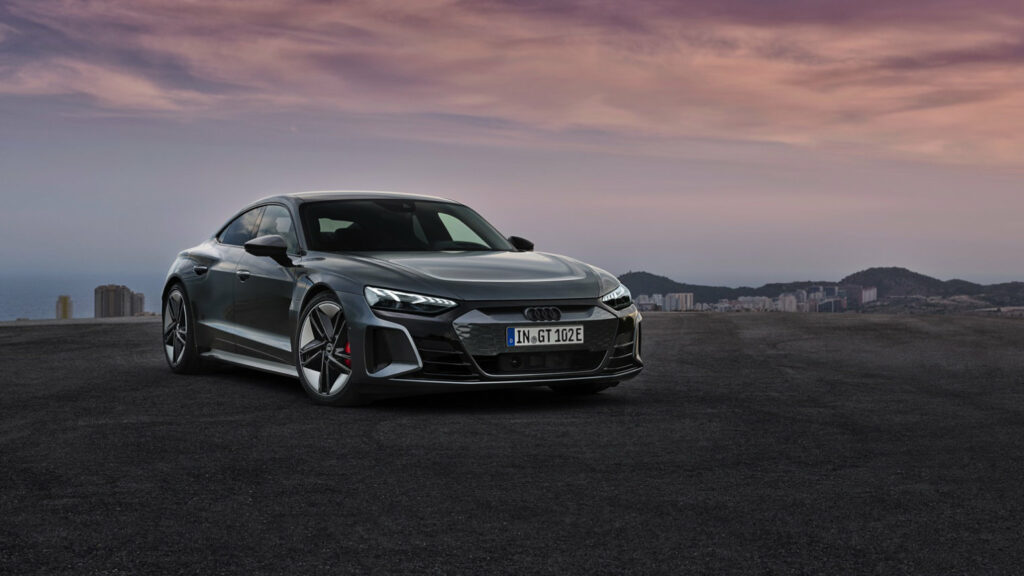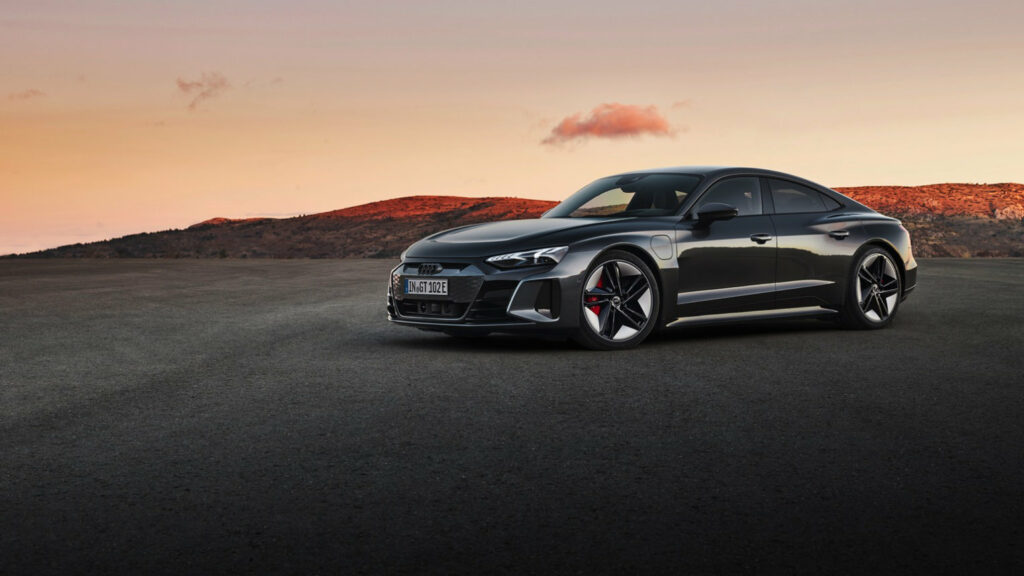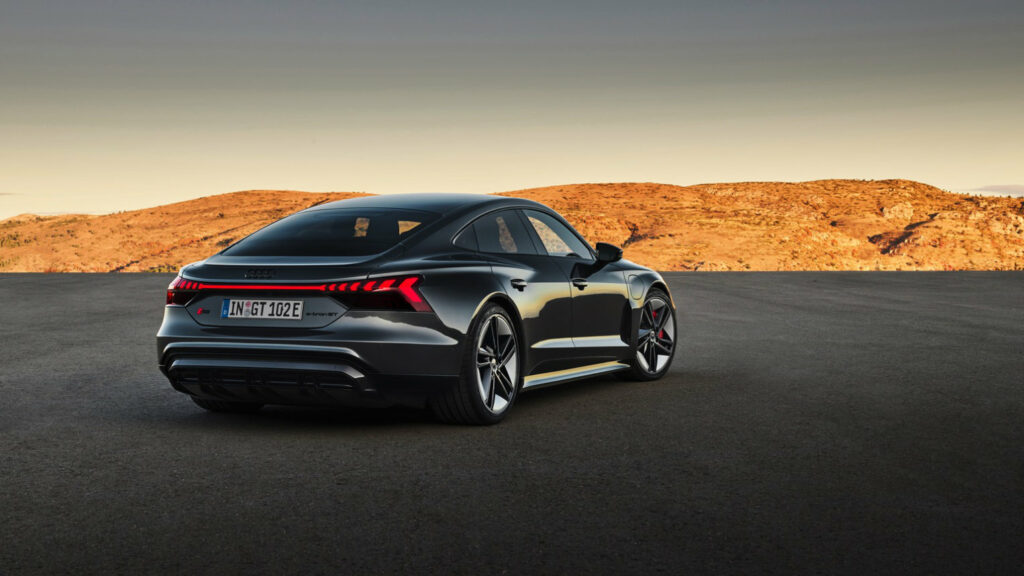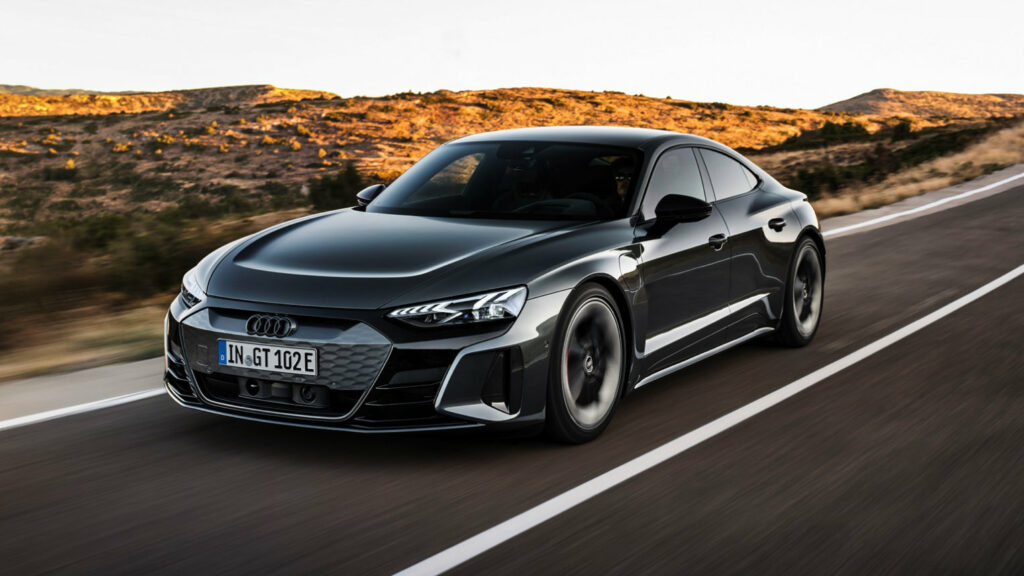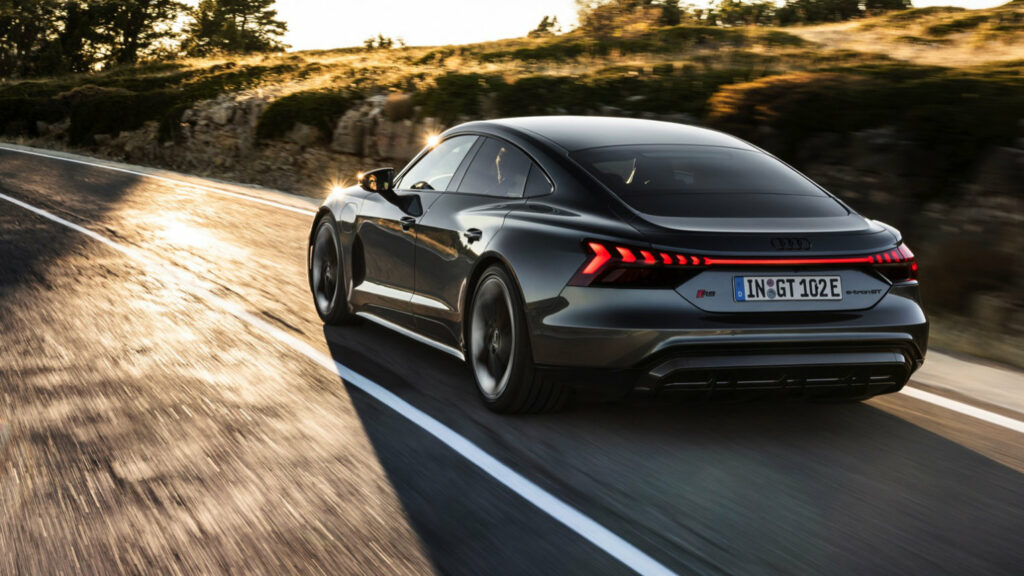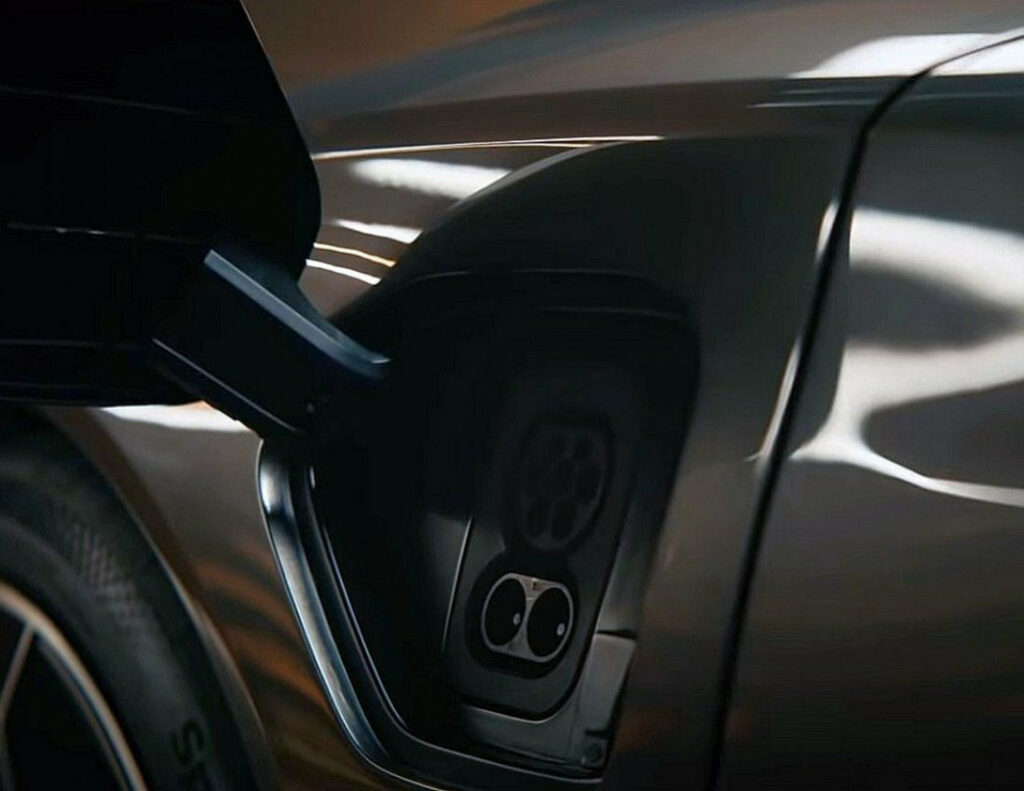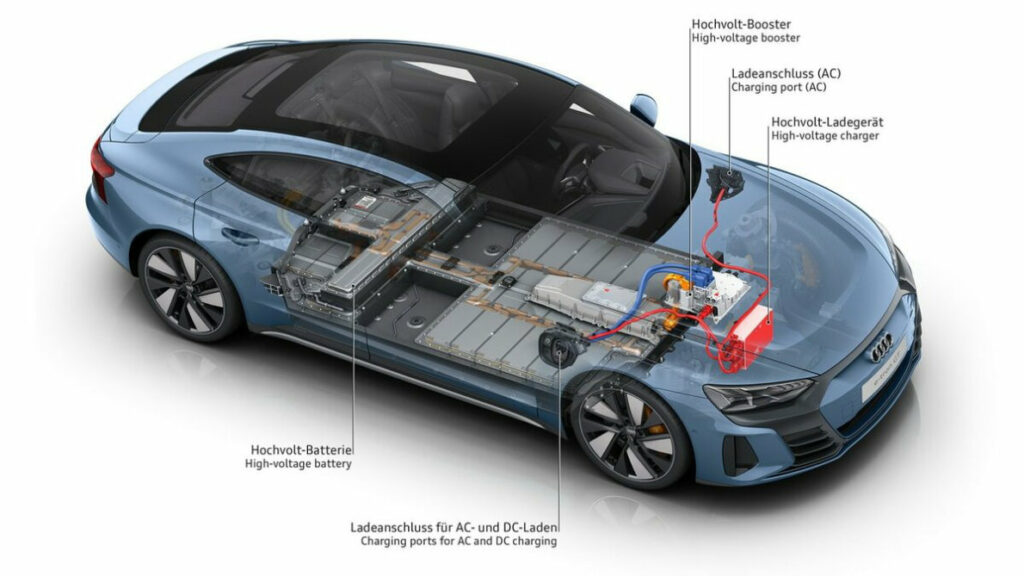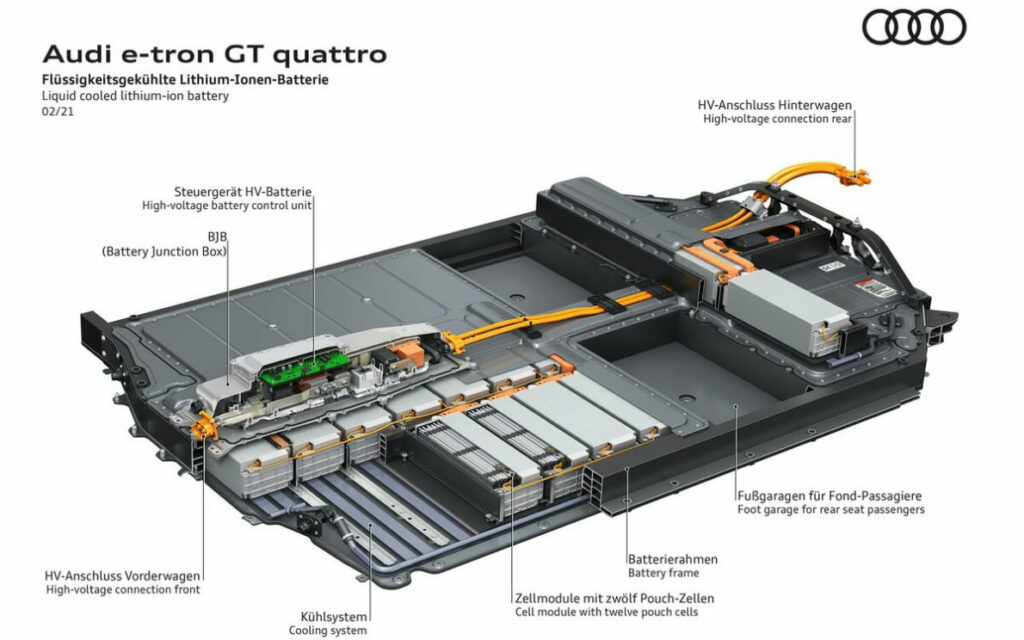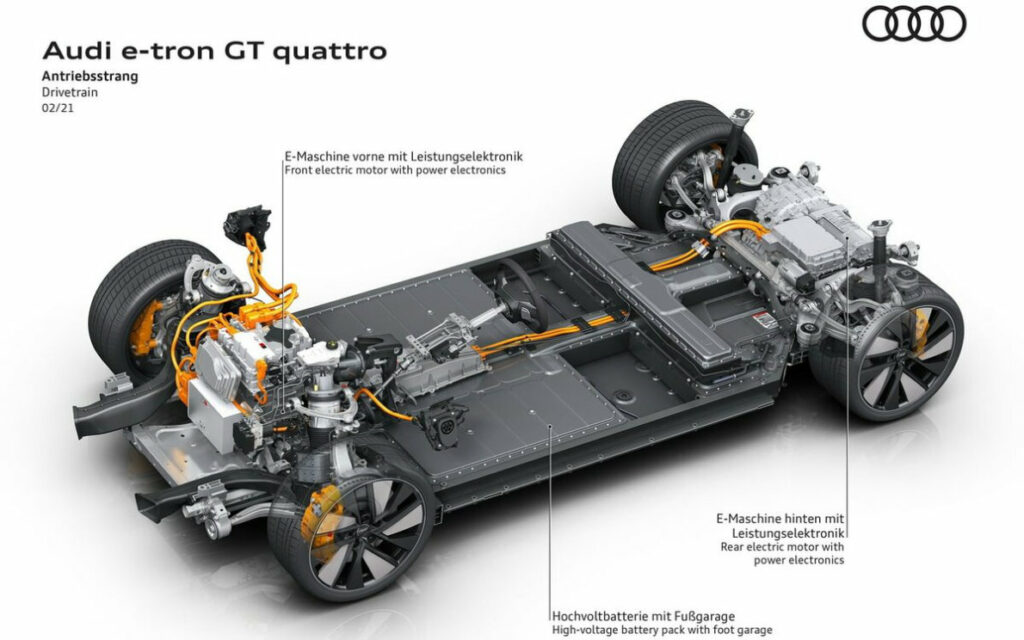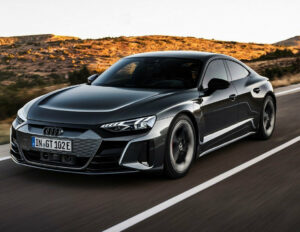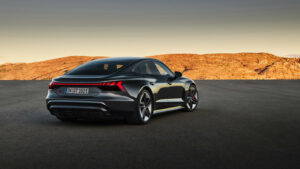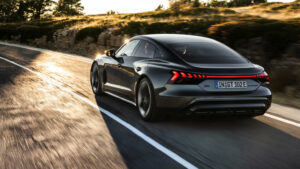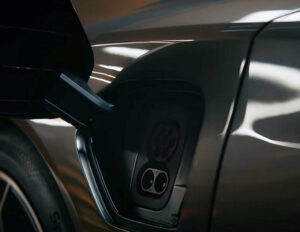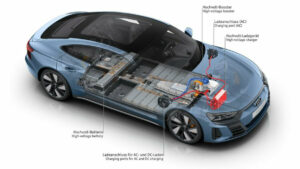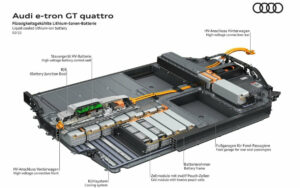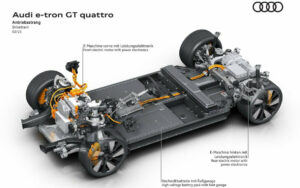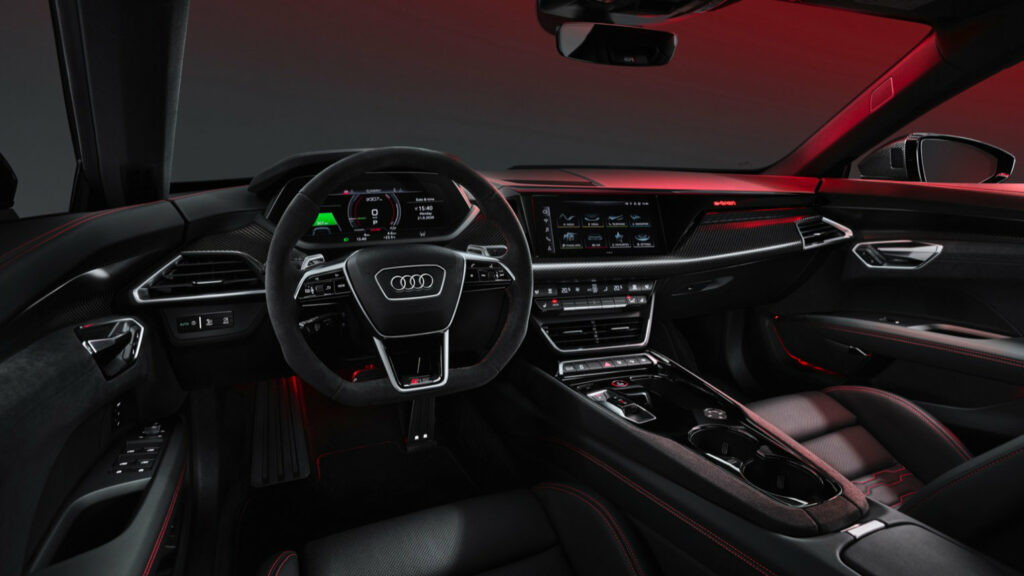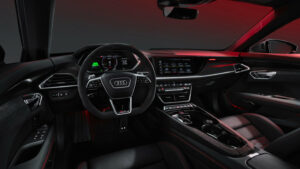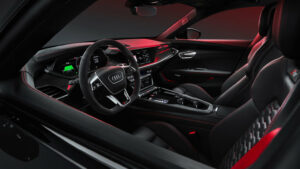Audi e-tron GT RS
The Audi e-tron GT RS is a high-performance electric sports car developed by the German automaker Audi. It was first introduced in February 2021 as part of the e-tron line, which includes other electric cars such as the e-tron SUV and e-tron Sportback.

The e-tron GT RS features a twin-engine electric drivetrain: one engine drives the front wheels and the other drives the rear wheels. The combined output of the two engines is 475 kW, 830 Nm, and the car can accelerate from 0 to 100 km/h (60 mph) in just 3.3 seconds. The top speed of the e-tron GT RS is limited to 250 km/h.
The car is equipped with a 93.4 kWh battery pack that provides up to 405 km of range on a single charge. It also supports fast charging, allowing the battery to charge up to 80% in just 22.5 minutes using a powerful DC fast charger.
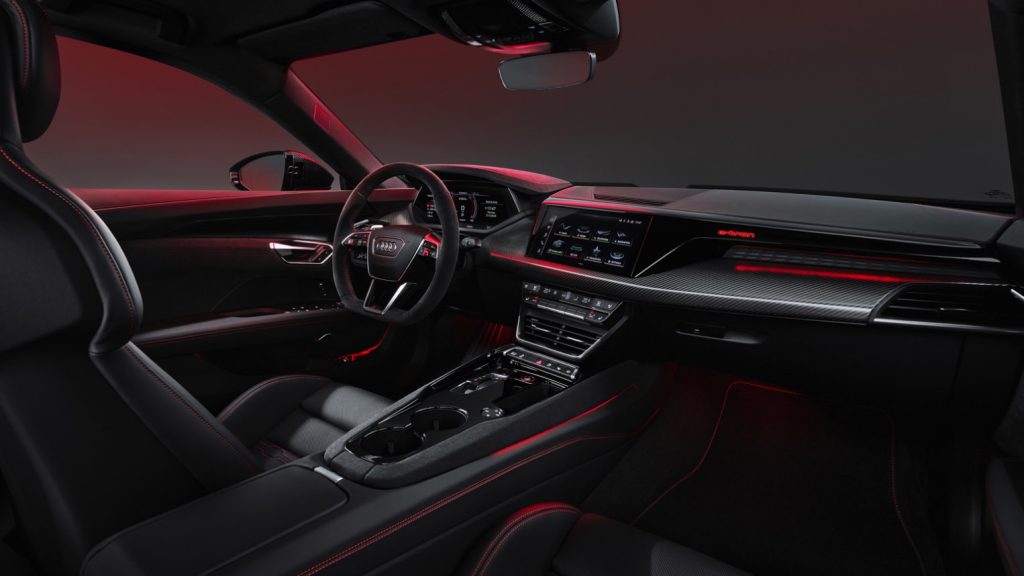
The e-tron GT RS has a sleek and sporty design with a low-slung body and aerodynamic profile. It is equipped with advanced technologies such as adaptive air suspension, all-wheel steering, and a sophisticated regenerative braking system that helps maximize the car’s range.
Overall, the Audi e-tron GT RS is a high-performance electric sports car that combines impressive performance and advanced electric vehicle technology.
| Performance | |
| Acceleration 0 – 100 km/h | 3.3 sec |
| Top Speed | 250 km/h |
| Electric Range | 405 km |
| Total Power | 475 kW (646 PS) |
| Total Torque | 830 Nm |
| Drive | AWD |
| Battery and Charging | |
| Battery Capacity | 93.4 kWh |
| Battery Useable | 85.0 kWh |
| Europe | |
| Charge Port | Type 2 |
| Port Location | Right Side – Front |
| Port Location 2 ‡ | Left Side – Front |
| Charge Power | 11 kW AC |
| Charge Time (0->405 km) | 9h15m |
| Charge Speed | 45 km/h |
| Fastcharge Port | CCS |
| FC Port Location | Right Side – Front |
| FC Port Location 2 | – |
| Fastcharge Power (max) | 270 kW DC |
| Fastcharge Time (41->324 km) | 21 min |
| Fastcharge Speed | 810 km/h |
| Energy Consumption EVDB Real Range | |
| Range * | 405 km |
| Vehicle Consumption * | 210 Wh/km |
| CO2 Emissions | 0 g/km |
| Vehicle Fuel Equivalent * | 2.4 l/100km |
| WLTP Ratings (TEL) | |
| Range | 472 km |
| Rated Consumption | 206 Wh/km |
| Vehicle Consumption | 180 Wh/km |
| CO2 Emissions | 0 g/km |
| Rated Fuel Equivalent | 2.3 l/100km |
| Vehicle Fuel Equivalent | 2.0 l/100km |
| WLTP Ratings (TEH) | |
| Range | 433 km |
| Rated Consumption | 225 Wh/km |
| Vehicle Consumption | 196 Wh/km |
| CO2 Emissions | 0 g/km |
| Rated Fuel Equivalent | 2.5 l/100km |
| Vehicle Fuel Equivalent | 2.2 l/100km |
| TEL = Test Energy Low | TEH = Test Energy High | |
| Rated = official figures as published by manufacturer. Rated consumption and fuel equivalency figures include charging losses. | |
| Vehicle = calculated battery energy consumption used by the vehicle for propulsion and on-board systems. | |
| Real Energy Consumption Estimation | |
| between 150 – 288 Wh/km | |
| City – Cold Weather * | 215 Wh/km |
| Highway – Cold Weather * | 288 Wh/km |
| Combined – Cold Weather * | 246 Wh/km |
| City – Mild Weather * | 150 Wh/km |
| Highway – Mild Weather * | 227 Wh/km |
| Combined – Mild Weather * | 185 Wh/km |
|
Energy use for each trip will vary considerably depending on the driver and the conditions. Therefore, we have provided a range of estimates which can be useful in developing an understanding of the potential benefits of this technology. |
|
| Dimensions and Weight | |
| Length | 4990 mm |
| Width | 1960 mm |
| Width with mirrors | 2158 mm |
| Height | 1410 mm |
| Wheelbase | 2900 mm |
| Weight Unladen (EU) | 2420 kg |
| Gross Vehicle Weight (GVWR) | 2860 kg |
| Max. Payload | 515 kg |
| Cargo Volume | 366 L |
| Cargo Volume Max | No Data |
| Cargo Volume Frunk | No Data |
| Roof Load | 75 kg |
| Tow Hitch Possible | No |
| Towing Weight Unbraked | 0 kg |
| Towing Weight Braked | 0 kg |
| Vertical Load Max | 0 kg |
| Miscellaneous | |
| Seats | 4 people |
| Isofix | Yes, 2 seats |
| Turning Circle | No Data |
| Platform | VW J1 |
| Car Body | Sedan |
| Segment | F – Luxury |
| Roof Rails | No |
| EV Dedicated Platform | Yes |
Home and Destination Charging (0 -> 100%)
A public charging station is required to use the highest possible charging rate. The EVSE/charging station’s charging capacity affects how long it takes to fully charge the battery. The table below shows all possible options for fully charging the Audi e-tron GT RS.
In Europe, plugging an electric car into an outlet is often as easy as plugging it into a household outlet, but there are differences from country to country. The table below shows the different ways to charge the Audi e-tron GT RS, but in some countries some chargers may not be available.
Type 2 (Mennekes – IEC 62196)

| Charging Point | Max. Power | Power | Time | Rate |
| Standard 11.0 kW On-Board Charger | ||||
| Wall Plug (2.3 kW) | 230V / 1x10A | 2.3 kW | 43h30m | 9 km/h |
| 1-phase 16A (3.7 kW) | 230V / 1x16A | 3.7 kW | 27h15m | 15 km/h |
| 1-phase 32A (7.4 kW) | 230V / 1x32A | 7.4 kW | 13h30m | 30 km/h |
| 3-phase 16A (11 kW) | 400V / 3x16A | 11 kW | 9h15m | 44 km/h |
| 3-phase 32A (22 kW) | 400V / 3x16A | 11 kW | 9h15m | 44 km/h |
| Optional 22.0kW On-Board Charger | ||||
| Wall Plug (2.3 kW) | 230V / 1x10A | 2.3 kW | 43h30m | 9 km/h |
| 1-phase 16A (3.7 kW) | 230V / 1x16A | 3.7 kW | 27h15m | 15 km/h |
| 1-phase 32A (7.4 kW) | 230V / 1x32A | 7.4 kW | 13h30m | 30 km/h |
| 3-phase 16A (11 kW) | 400V / 3x16A | 11 kW | 9h15m | 44 km/h |
| 3-phase 32A (22 kW) | 400V / 3x32A | 22 kW | 4h45m | 85 km/h |
Fast Charging (10 -> 80%)
If you want to enjoy driving an electric car, one of the most important features to consider is the number of miles per hour the car can travel while charged. This is called the “range” of the car. All electric cars have a certain range, even if they are 100% charged. This is because they do not have an internal combustion engine to lean on if you need to drive a long distance.
Max. Power: The maximum power provided by the charging point
Avg. Power: The average power provided by the charging point during a session of 10% to 80%.
Time: the time it takes to charge from 10% to 80%
Speed: the average charging rate during the session of 10% to 80%
Combined Charging System (CCS Combo 2)
| Charging Point | Max. Power | Avg. Power | Time | Rate |
| CCS (50 kW DC) | 50 kW | 50 kW | 75 min | 220 km/h |
| CCS (100 kW DC) | 100 kW | 90 kW | 42 min | 400 km/h |
| CCS (150 kW DC) | 150 kW | 120 kW | 31 min | 540 km/h |
| CCS (175 kW DC) | 175 kW | 135 kW | 28 min | 600 km/h |
| CCS (350 kW DC) | 270 kW | 175 kW | 21 min | 810 km/h |
| Brand | Audi |
| Model | e-tron GT RS |
| Body Style | Sedan |
| Car Engine | Electric |
| Motor power | 475 |
| Maximum Torque, Nm | 830 |
| Battery Energy, kWh | 93.4 |
| Power reserve (NEDC/EPA/WLTP), km | - / - / 405 |
| Level Charging (230/400/DC), hours | - / 4.45 / 0.75 |
| Electrical Acceleration, 0-100 km/h (0-62.1 mph) in sec | 3.3 |
| Top Speed, km/h | 250 |
